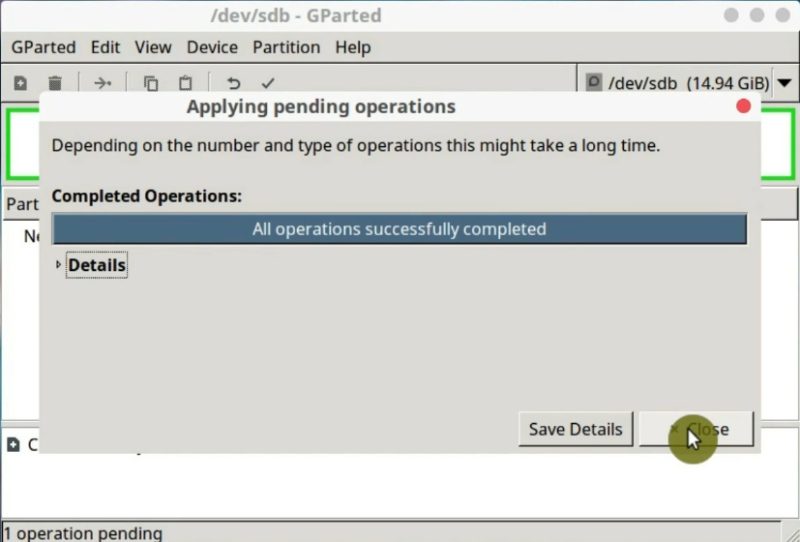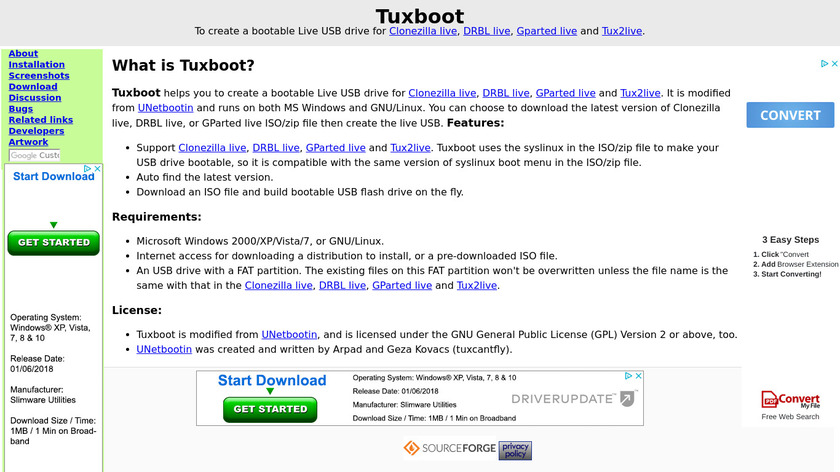
- #Using gparted live usb to make windows bootable install
- #Using gparted live usb to make windows bootable 32 bit
- #Using gparted live usb to make windows bootable archive
Since I used Ubuntu for this, I got ubuntu folder and grub圆4.efi file ( /EFI/ubuntu/grub圆4.efi).

If you're not EFI booted, you'll see some warnings but installation will proceed anyway.īrowse the small FAT32 partition and look in EFI folder for another folder that contains an. Failing to use the correct values in this command may make your system not bootable. efi-directory is the mount point of the small FAT32 partition. boot-directory is the boot folder from the FAT32 partition. Read this command carefully and adapt it to your situation.

Sudo grub-install -target=x86_64-efi -boot-directory=/media//loader/boot -efi-directory=/media//loader /dev/sdX So make a directory named boot either using Files or the Terminal ( cd /media//loader & mkdir boot).

#Using gparted live usb to make windows bootable install
dev/sdb).įirst of all we need a directory to install GRUB in it. If you clicked on it in the Files manager, it should be mounted at /media//. Mount the FAT32 small partition (named loader in my example) and note its mount point. See in my example that no package gets removed in order to solve conflicts. Installing this package should not interfere with other GRUB packages that are responsible for correctly booting your system. I will install the package in Ubuntu using Synaptic. It's very important to pay attention to possible conflicts when installing it and abort installation if there are any. You will need the grub-efi-amd64-bin package installed (if you're running an EFI 圆4 distro you already have it installed). It doesn't matter what architecture is your current Linux distribution as long as it is booted by GRUB. It is a little more difficult to install and configure. Copy the entire EFI folder and its contents to the root of your FAT32 partition from thumb drive. You will find an EFI folder and a readme file. Grab his FAT32 disk image from here: uefi-ntfs.img and mount it using Disk Image Mounter on Ubuntu. We will use Pete Batard's UEFI:NTFS driver. You are probably wondering what files we put in the FAT32 partition. When you're done, you can unmount the partition.
#Using gparted live usb to make windows bootable 32 bit
If you can't find bootmgfw.efi in install.wim then you probably have a 32 bit Windows ISO or other types of images (recovery disks, upgrade versions). Rename it to boot圆4.efi and put it on the USB drive, in the efi/boot folder. 1/Windows/Boot/EFI and extract the file bootmgfw.efi anywhere you want.
#Using gparted live usb to make windows bootable archive
Open install.wim with your archive manager (you will need 7z installed). Browse into the mounted Windows ISO image into the sources folder. Here is what to do if you don't have the boot圆4.efi file in efi/boot folder. If the OS you are making a bootable USB for is Windows 7, browse the efi/microsoft folder and copy the entire boot folder from this path one level up in the efi folder. Then look on the USB drive, in efi/boot folder for boot圆4.efi file. Mount the big NTFS partition ( windows in my example) and copy all Windows files from mounted ISO or DVD to it.

You will need to specify it to GRUB configuration. Keep in mind what number gets assigned to the NTFS partition. You could reverse partition order, but I strongly suggest you keep the FAT32 one containing EFI loader at the end! When you're finished, the partition scheme on USB drive should look like below. The labels are not mandatory but are a way to remember what will that partition hold. Right click again the remaining unallocated space and add a NTFS partition. Right click the unallocated space and add a New partition with the following specification: Next, you'll make an 30 - 80 MB FAT32 partition at the end of the USB drive. Then, from Device menu choose Create partition table. Launch GParted, select the correct drive and unmount it if necessary. UEFI can read MBR FAT32 contents and boot from it. The discussion here is about choosing the right partition table.


 0 kommentar(er)
0 kommentar(er)
